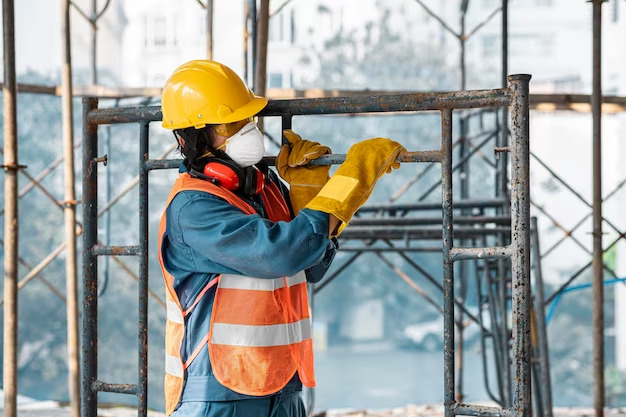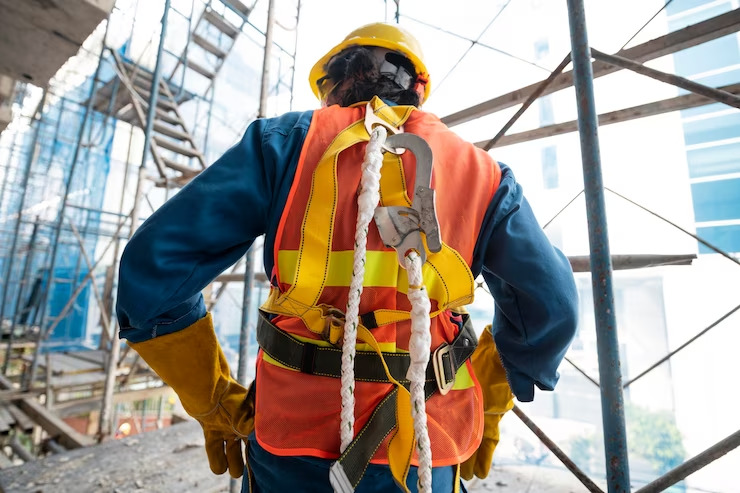Safety on construction sites is paramount, demanding strict adherence to best practices. Site managers play a crucial role in ensuring a safe working environment for their teams.
Construction sites inherently pose risks, but with proper planning, communication, and adherence to best practices, site managers can significantly reduce the likelihood of accidents and injuries.
Table of Contents
Comprehensive Risk Assessment
One of the first steps to ensuring construction site safety is conducting a comprehensive risk assessment. Site managers should systematically evaluate the potential hazards associated with the task, considering factors such as the nature of the work, environmental conditions, and equipment usage.
This assessment should be dynamic, evolving as the project progresses and new risks emerge. By identifying potential dangers early on, site managers can implement targeted safety measures to mitigate risks effectively.
Effective Communication and Training
Clear communication is the cornerstone of a safe construction site. Site managers must establish open lines of communication between all team members, ensuring that information about potential hazards, safety protocols, and emergency procedures are effectively disseminated.
Regular safety meetings should be conducted to discuss specific risks, address concerns, and reinforce safety protocols. Additionally, comprehensive training programs should be implemented to equip workers with the knowledge and skills needed to perform their tasks safely.
Site managers should prioritize ongoing education to ensure that the workforce stays informed about the most recent safety standards and procedures.
Personal Protective Equipment (PPE) Compliance

The proper use of Personal Protective Equipment (PPE) is non-negotiable on construction sites. Site managers must ensure that all workers are provided with the appropriate PPE for their tasks and that they always wear it.
This includes hard hats, gloves, safety glasses, high-visibility clothing, and any other specialized equipment required for specific job functions.
Regular inspections should be conducted to verify the condition of PPE, and any damaged or worn equipment should be replaced immediately. Emphasizing the importance of wearing PPE through on-site safety audits helps create a safety-conscious culture at the construction site.
Fall Protection Measures

Falls are among the most common accidents on construction sites, making fall protection a top priority for site managers.
This involves implementing guardrails, safety nets, and personal fall arrest systems where necessary. Site managers should conduct regular inspections of elevated work areas to ensure that proper fall protection measures are in place and that workers are adhering to safety guidelines.
Moreover, providing appropriate training on fall prevention and rescue procedures is essential for all workers exposed to elevated workspaces.
Equipment Safety Check and Maintenance

Construction sites rely heavily on a variety of equipment, from heavy machinery to power tools. Site managers must establish a robust system for regular equipment inspections and maintenance. This includes checking for wear and tear, ensuring proper functioning of safety features, and promptly addressing any defects.
Before each use, operators should conduct pre-start checks to verify that the equipment is in good working condition. By prioritizing equipment safety, site managers can prevent accidents caused by mechanical failures and enhance overall job site safety.
Emergency Response Planning
Preparing for emergencies is a critical aspect of construction site management. Site managers should develop comprehensive emergency response plans that cover a range of scenarios, including fires, chemical spills, and medical emergencies.
These plans should be communicated to all team members, and regular drills should be conducted to ensure everyone is familiar with emergency procedures.
Adequate first aid facilities and personnel should be readily available, and site managers should collaborate with local emergency services to facilitate a swift response if needed.
Roofing Safety

Ensuring roofing safety is paramount due to the inherent risks associated with working at elevated heights. Workers are required to don appropriate personal protective equipment, including harnesses and non-slip footwear, to mitigate potential hazards.
Site managers play a crucial role in guaranteeing safety by securing scaffolding and ladders, conducting routine safety briefings, and installing guardrails for an additional layer of protection.
Thorough inspections and clear communication about potential hazards and emergency procedures are important components of a comprehensive safety plan.
The landscape of roofing safety is evolving with the introduction of impact resistant shingles. Integration of these shingles into roofing projects not only bolsters the structure against external forces but also contributes to a safer roofing industry as a whole.
The durability of impact-resistant shingles leads to a decrease in exposure hours for construction workers, as they require less frequent replacement.
This innovative approach aligns with the overarching goal of minimizing risks and ensuring the well-being of the construction team. “In roofing, safety is more than a practice; it’s a commitment to the well-being of every team member.
Our dedication to rigorous safety protocols is the cornerstone of quality craftsmanship, ensuring that each day on the job site ends as securely as it begins.” Jeff Guthrie of Mesa AZ Roofing Pros.
Electrical Safety Protocols
Construction sites involve extensive use of electrical equipment, making electrical safety a paramount concern. Site managers should enforce strict protocols for the use and maintenance of electrical tools, cords, and outlets.
Regular inspections of electrical systems should be conducted to identify potential hazards such as exposed wires or overloaded circuits.
Workers should be trained on proper electrical safety practices, including the use of Ground Fault Circuit Interrupters (GFCIs) and the importance of reporting any electrical issues promptly.
Housekeeping and Organization

Maintaining a clean and organized construction site is more than just aesthetic; it is a fundamental aspect of safety. Site managers should emphasize the importance of good housekeeping practices, ensuring that walkways are clear, debris is promptly removed, and tools are stored properly.
Additionally, establishing a proper trash disposal area is crucial. This not only contributes to a clutter-free environment but also prevents potential hazards associated with improperly discarded materials. “In the realm of construction safety, effective waste management is not just a logistical task; it’s a cornerstone of a secure jobsite.
Well-managed jobsite dumpsters contribute not only to cleanliness but to the overall safety culture, ensuring a hazard-free environment for every worker.” – Ash Janssen of Fuzion Field Services.
Regular Safety Audits and Reviews
Continuous improvement is key to maintaining a safe construction site. Site managers should conduct regular safety audits and reviews to assess the effectiveness of existing safety measures and identify areas for improvement.
This includes soliciting feedback from workers, analyzing incident reports, and staying informed about industry advancements in safety practices.
By proactively addressing potential issues and adapting safety protocols based on lessons learned, site managers can create a culture of continuous improvement and prioritize the well-being of their teams.
Ensuring Construction Site Safety: The Crucial Role of Proactive Site Managers
Construction site managers hold a pivotal role in ensuring the safety of their teams. By implementing and consistently enforcing these top safety practices, site managers can create a work environment that prioritizes the well-being of every team member.
From comprehensive risk assessments to regular safety audits, a proactive approach to safety not only prevents accidents but also fosters a culture where safety is ingrained in every aspect of the construction process.
Ultimately, the investment in safety measures pays off in the form of reduced injuries, increased productivity, and the well-deserved confidence and trust of the construction team.
Explore the latest construction safety best practices at https://constructionhow.com/. Access valuable insights, practical guides, and expert advice to prioritize the well-being of your team. Make safety a top priority on your construction site—your commitment can make a difference!





